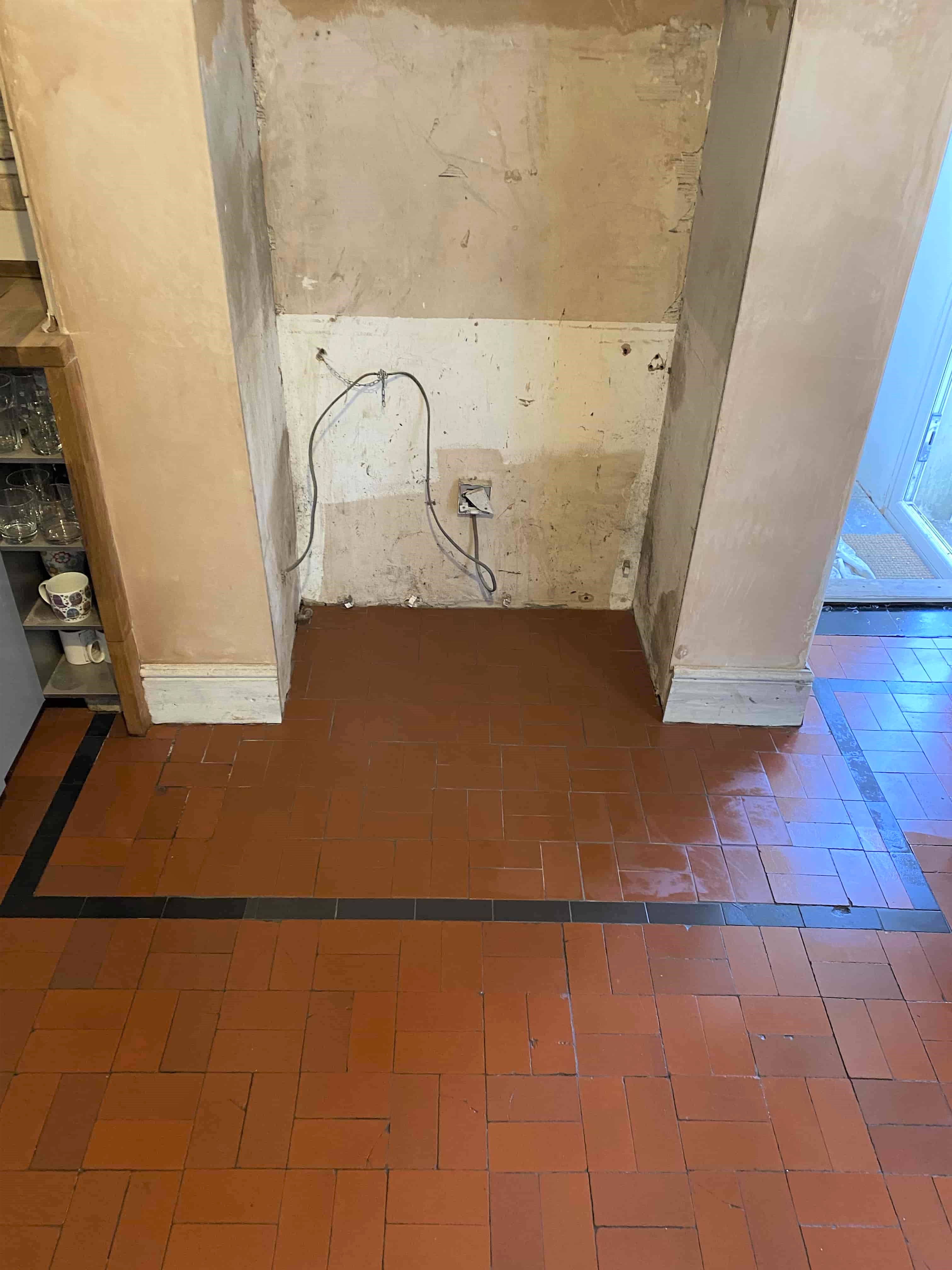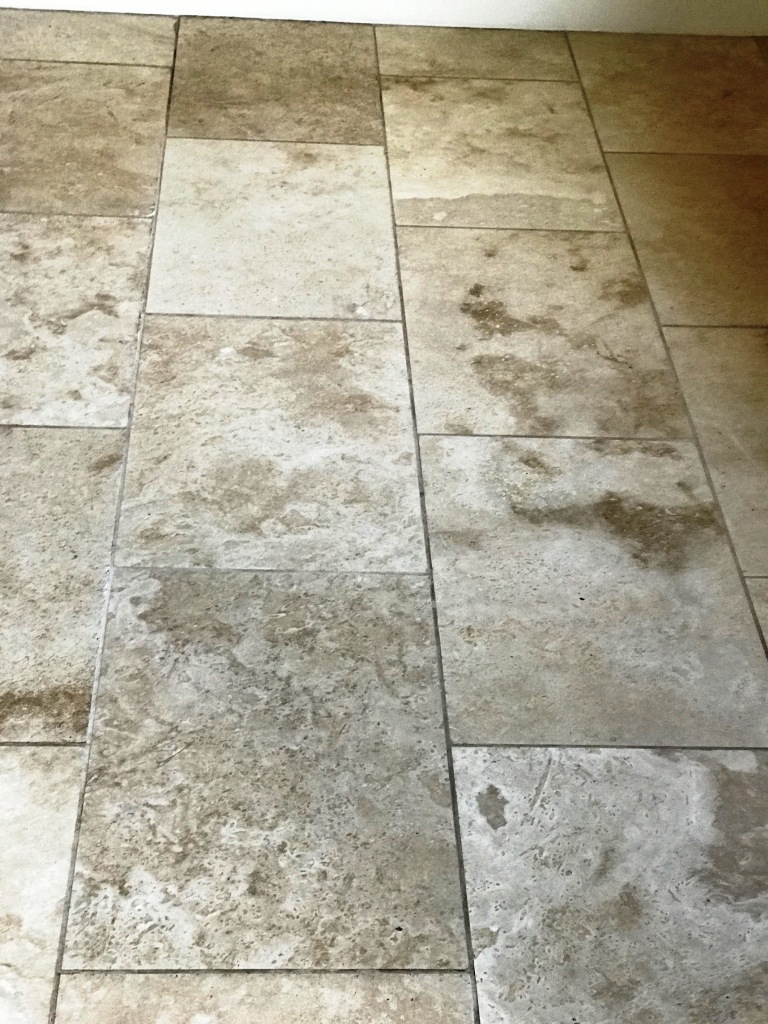Quarry Tiled Floor Fully Rebuilt and Restored in Morriston Swansea
This customer from the Morriston suburb Swansea contacted us about their Quarry tiled floor which needed a deep clean and seal; also, they had a section of flooring which had been back filled with cement that they wanted digging out and retiled with matching tiles. I suspect an old heavy range cooker once occupied this space and the floor had been concreted to cope with the weight.

I’m an experienced tiler so was more than happy to remove the old concrete and replace with Quarry tiles however it can be an issue finding suitable tiles that were a close match to the rest of the floor. I worked out a quote for doing the work which was accepted and a date set of the work to start.
Repairing a Quarry Tiled Kitchen Floor
We began the first day by carefully digging out all of the cement that had been backfilled into the floor. The rubble was removed and the section levelled by pouring in a quick setting self-levelling latex compound.

Whilst this was drying, I worked out a tiling plan using the quarry tiles I had managed to source that were a close match to the original. I knew that once the floor was cleaned and then sealed, they would blend in well. Once the latex was dry the floor was rebuilt using the new tiles and then grouted in. My customer was thrilled to see the transformation that was happening.
Deep Cleaning a Quarry Tile and Grout
The next day with the replacement tiles set work began on deep cleaning both sections of flooring using a strong dilution of Tile Doctor Pro-Clean which was allowed to soak into the tile and grout for a while so it could break down and loosen the dirt, existing sealer, and stains.
Whilst applying the Pro-Clean I noticed there were paint spots specifically next to the skirting boards so to ensure they would also get treated Tile Doctor Remove & Go was applied, again leaving for 15 minutes. The products were then agitated into the Quarry tiles using a stiff brush and water making sure to scrub along the grout lines to clean them up as well. This action lifted the soils out of the tile to the surface where they were extracted using a wet vacuum.
After this step a coarse 400-grit burnishing pad fitted to a rotary floor buffer was run over the tiles using water for lubrication. These pads are made from industrial diamonds and grind away at the clay tile to release more dirt and soiling. Once done the floor was rinsed with water and vacuumed again to remove as much moisture as possible.
Last step was to inspect the floor and spot treat any sections where the machine may have struggled to clean and needed further work. Once satisfied with the results the floor was left to dry off overnight so it would be ready for sealing the following day.
Sealing a Quarry Tiled Kitchen Floor
The following day we arrived and conducted a moisture test on the floor which concluded the floor was dry enough to be sealed. The customer wanted a matt finish sealer that also enhanced the colours of the tiles so Tile Doctor Colour Grow was selected.
Three coats of Colour Grow were applied allowing each coat to dry for thirty minutes before proceeding with the next. The floor was the dry buffed using a White pad to remove any residue off the surface of the Quarry tile. The customer was delighted with the outcome and so were we.

The deep clean and new sealer really helped blend in the replacement tiles with the original and once complete my customer was very happy with the transformation. Before leaving we discussed aftercare and recommend Tile Doctor Neutral Tile Cleaner to maintain the tiles going forward. This is a pH neutral product that is safe to use on sealed surfaces and won’t prematurely erode the sealer like many stronger tile cleaners you will find in supermarkets.

Professional Restoration of a Quarry Tiled Floor in Swansea
Quarry Tiled Floor Fully Rebuilt and Restored in Morriston Swansea Read More »














